
If you are planning to undergo a tummy tuck, you deserve to understand every aspect of the surgery and the recovery. Dr. Vitenas, our board-certified plastic surgeon from Houston, TX, believes patients deserve transparency without sugar-coating the facts about the recovery. A tummy tuck, also known as abdominoplasty, is a surgical procedure that addresses excess skin, abdominal wall laxity, and weakened abdominal muscles to achieve a firmer, more contoured abdomen.
Factors to Consider Before and After a Tummy Tuck Procedure
Before the tummy tuck surgery, patients should consider factors such as their overall health, realistic expectations for the outcome of the procedure, and the necessary preparation for the recovery period. After the surgery, it’s important to follow the post-operative instructions carefully, including proper wound care and activity restrictions. It’s also important to understand that the recovery period can be uncomfortable and may involve some pain and swelling, but following the instructions provided by the surgeon can help minimize any complications and ensure the best possible outcome.
Clothing Will be Tighter
During the recovery process, there are several important factors to keep in mind. One common effect of a tummy tuck is swelling, which can make your abdomen appear larger than before the tummy tuck surgery. It’s essential to wear loose clothing during this time and be patient as the swelling gradually subsides, revealing the desired firm and flat stomach.
Temporary Weight Gain is Normal
Temporary weight gain is also normal during the early stages of recovery. The body undergoes trauma during the surgery, leading to swelling and bruising. This can result in water retention and a temporary increase in weight. However, as the swelling and bruising fade, this effect will diminish.
Anesthesia and Painkillers Cause Constipation
Anesthesia and painkillers used during the tummy tuck surgery can cause constipation as a side effect. It’s important to stay hydrated and consume a fiber-rich diet to mitigate this issue. In some cases, a laxative or stool softener medication may be necessary. Minimizing the use of prescription pain medication as soon as possible and transitioning to over-the-counter painkillers can also help alleviate this side effect.
Laughter can be Painful
Any movement of the treated abdominal area can be painful – including laughing or crying. Avoid stretching, lifting, bending, or any other motion that could stress the sutures to speed tissue healing. Take it easy, and don’t lift your children, pets, or anything with any weight, and when you feel like laughing, be aware that it can be painful.
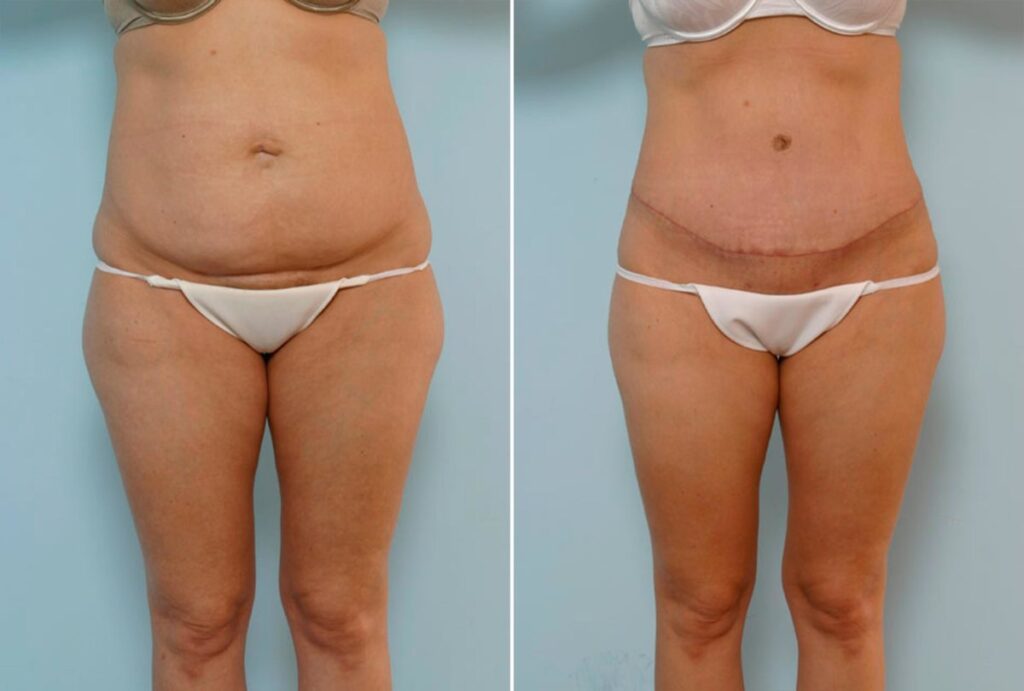
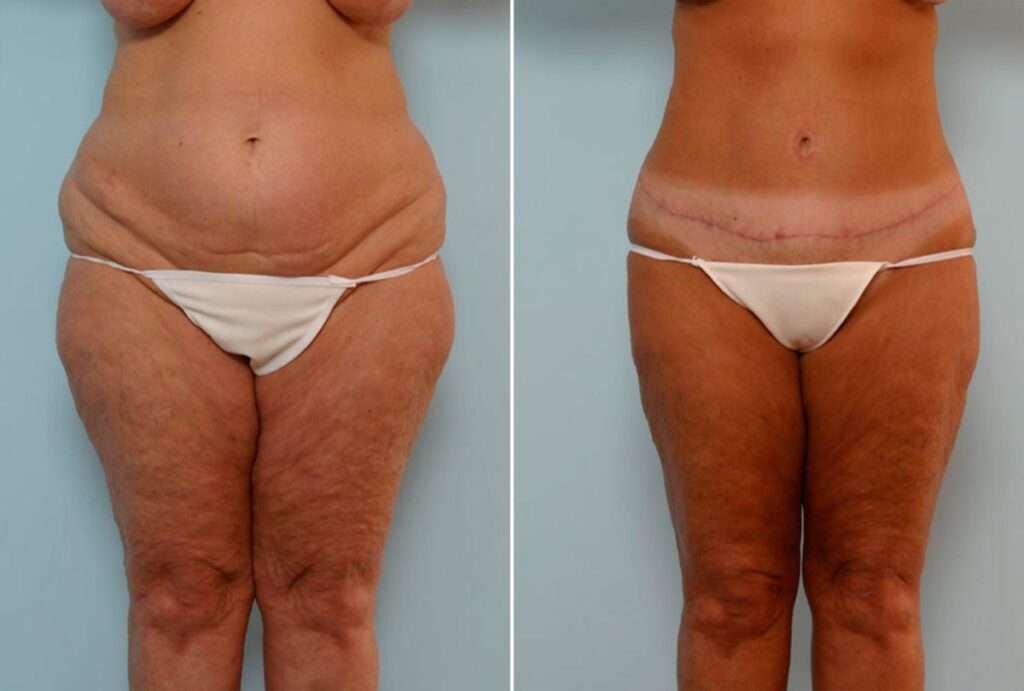
You Can’t Do it Alone
Support from others is vital during the recovery process. As it takes time to heal, it’s advisable to arrange for assistance, especially if you have children. Having someone to help care for them and staying with you for at least a week or as long as needed can make the recovery smoother.
You Won’t Be Able to Stand up Straight
Immediately after surgery, you may find it difficult to stand up straight. It’s normal to walk with your back bent over for a varying period, typically within a week, as the tightened abdominal muscles need time to adjust. Eventually, you will regain the ability to stand upright when your body is ready.
You Need Weeks Off Work
Some patients return to work in about two weeks, but many need more time. Plan your life around your surgery, with enough time off to return to work (or other activities) without feeling pain or fatigue and being unable to function.
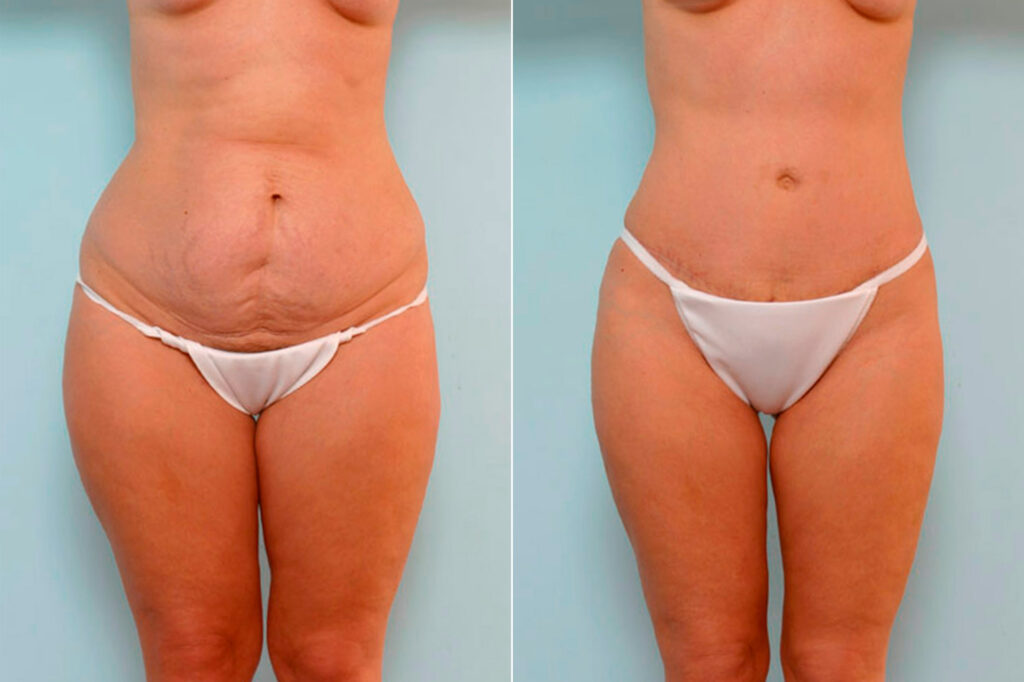
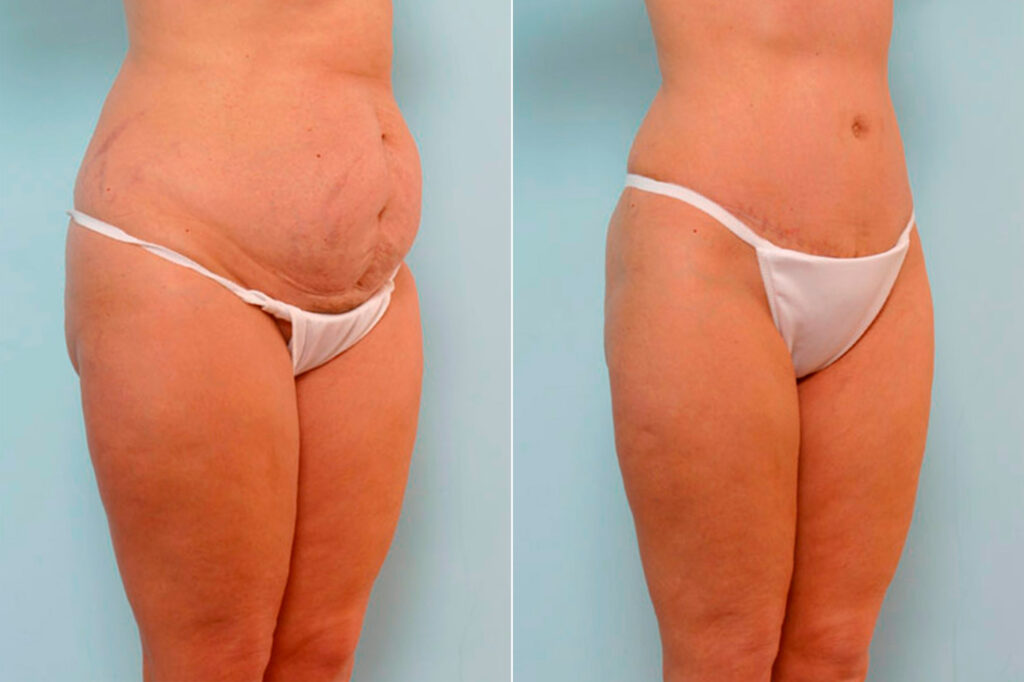
Exercise? Start Slow.
Gentle movement is encouraged after a tummy tuck to promote healthy circulation and aid in healing while minimizing the risk of blood clots. However, it’s crucial to avoid strenuous activities during the initial stages of recovery. Your surgeon and their staff will monitor your progress and advise you on when it’s appropriate to resume exercise, usually starting with gentle daily walks.
A Full Recovery Takes Time
The results of a custom tummy tuck can be life-changing. You will feel confident wearing tight clothing without concern about hiding a tummy bulge. However, you will need some patience; a full recovery will take about three to six months. Tummy tuck scars will start to fade at about six months, but you can expect about a year before they disappear to be less visible. They are placed to be hidden from view, even in a revealing bikini bottom, and with time, will appear to be a thin white line that is barely visible.
How to Minimize Tummy Tuck Scars
Scarring is an inevitable part of having a tummy tuck. The result of the procedure is usually worth having to deal with the scars that are left behind.
It’s important to understand what to expect and how to manage your tummy tuck scars in order to ensure the best possible outcome.
The main scar will be a horizontal line across the abdomen, just below the belly button, where excess skin is removed. This scar can take up to several months after surgery before it starts becoming less visible. A vertical scar may also appear in some cases where more skin has been removed from the lower abdomen.
To minimize complications with tummy tuck scars, it’s important to follow your surgeon’s instructions about wound care and keep your incision clean and dry for at least 48 hours after surgery. Scar massage and other methods of scar treatment can help reduce redness, width, and keloid scars formation of wide or abnormal tummy tuck scars over time. Dr. Vitenas will advise you on which product should be used for this purpose as well as on how often you should perform scar massage.
Tummy Tuck Recovery Tips
To speed your tummy tuck recovery and enjoy your newly reshaped abdomen, follow these tips:
Follow All Aftercare Instructions to the Letter.
Your surgeon will provide you with specific aftercare instructions tailored to your individual case. It’s crucial to follow these instructions diligently. Take all prescribed medications as scheduled, including the entire course of antibiotics. Wear the compression garment as directed to support the healing process. Attend all follow-up appointments to monitor your progress and address any concerns.
Eat a Healthy Diet
Now is the right time to ensure you are eating a healthy diet. When your food is nutrient-rich, the body can use it. Avoid salty, greasy, processed, and sugary treats during your recovery. Drink plenty of water and avoid alcoholic drinks and sodas altogether.
Rest, Rest, Rest
Your body needs time to heal, and you will feel tired. Take advantage of the time you have for your recovery to rest as much as possible, and don’t push yourself.
Avoid Stress
Stressful situations are not conducive to healing. A serene environment will help you heal faster and be happier overall!
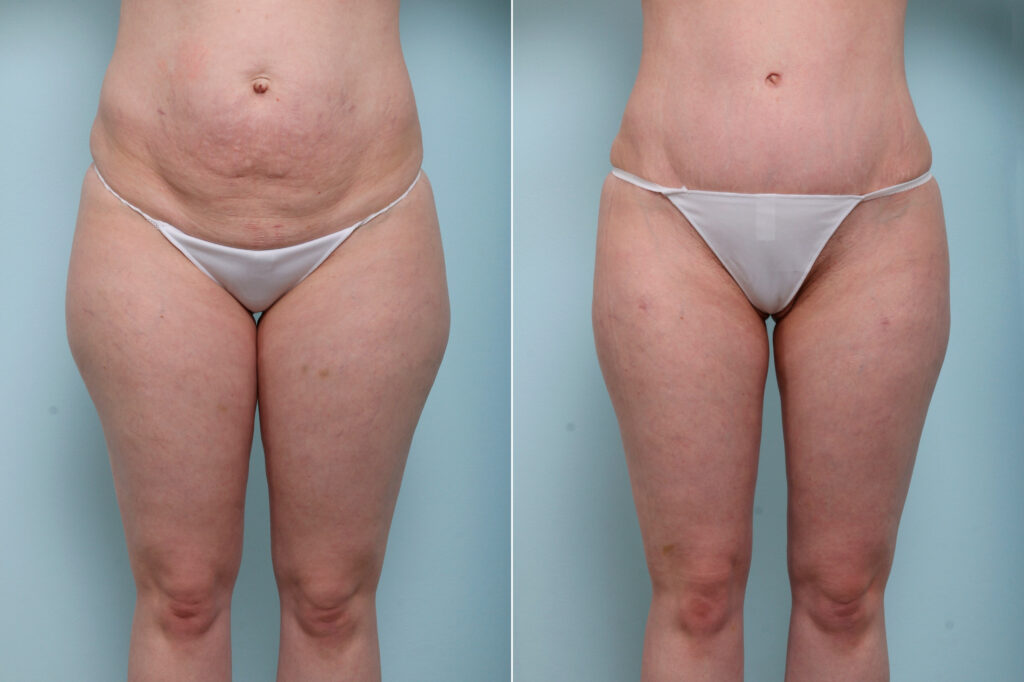
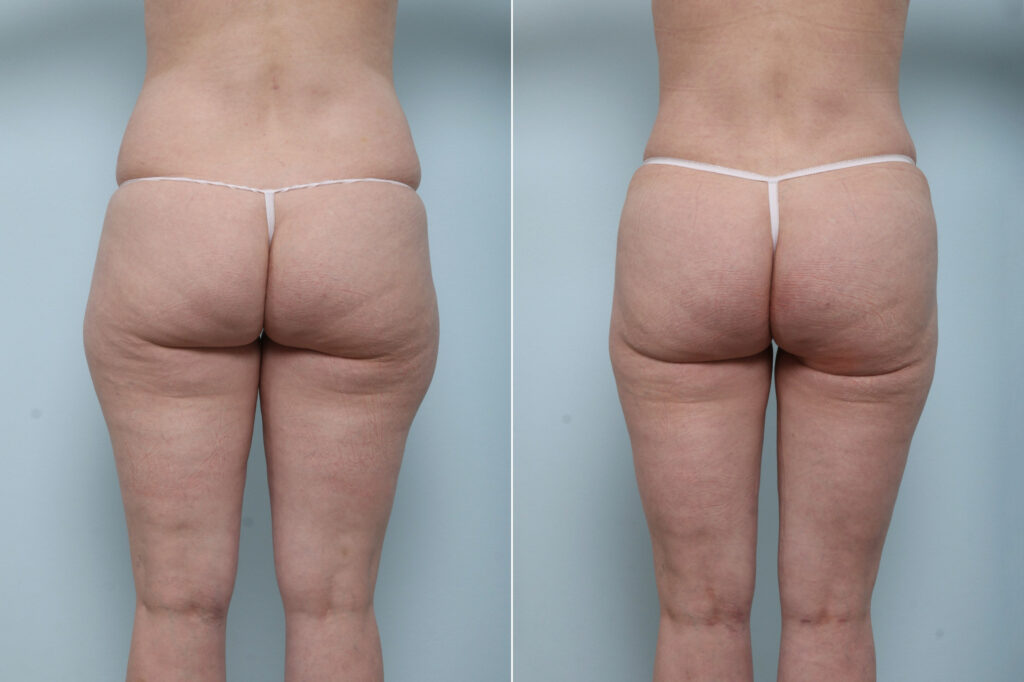
The Cost of a Tummy Tuck and Financing Options
A tummy tuck, or abdominoplasty, is a major surgery that reshapes the abdominal area. It is one of the most popular body surgeries performed in cosmetic practices today and typically has great results. The average cost of a tummy tuck varies based on individual patient needs. Financing options are available for those considering this cosmetic procedure but may need help covering the cost of surgery.
Be Careful with Weight Fluctuation
After a tummy tuck, it’s important to maintain your results for as long as possible. Body contouring procedures are great for treating loose skin and muscles after major weight loss, but the results will not last forever without proper maintenance. To maintain your reshaped abdomen, you should stay at a healthy weight and avoid drastic fluctuations in your body weight. Additionally, if you do experience extra skin or loose muscles due to pregnancy or aging, you may want to consider a mini tummy tuck to help keep your stomach looking flat and toned.
The Importance of Choosing a Qualified and Experienced Surgeon
Choosing a qualified and experienced surgeon is essential for any cosmetic procedure, including a tummy tuck. An approachable surgeon will make the patient feel comfortable during their confidential consultation and answer any common questions. During the initial recovery period, following up consultations with your surgeon is key to a successful recovery. Additionally, it’s important to find a surgeon that listens to your cosmetic concerns as well as provides realistic expectations. Although a cheaper price may be tempting, it’s best to focus on finding an experienced surgeon with solid credentials rather than settling for a lower-cost solution.
We Are Here to Help.
At Vitenas Cosmetic Surgery, our team is here to help you have an easy, fast recovery. Dr. Vitenas is a talented, board-certified plastic surgeon recognized as a leader in the field. His private luxury practice in Houston is world-class and equipped with advanced technology. Your journey to a slimmer, contoured body will be under the care of a plastic surgeon known for his results’ beauty.
